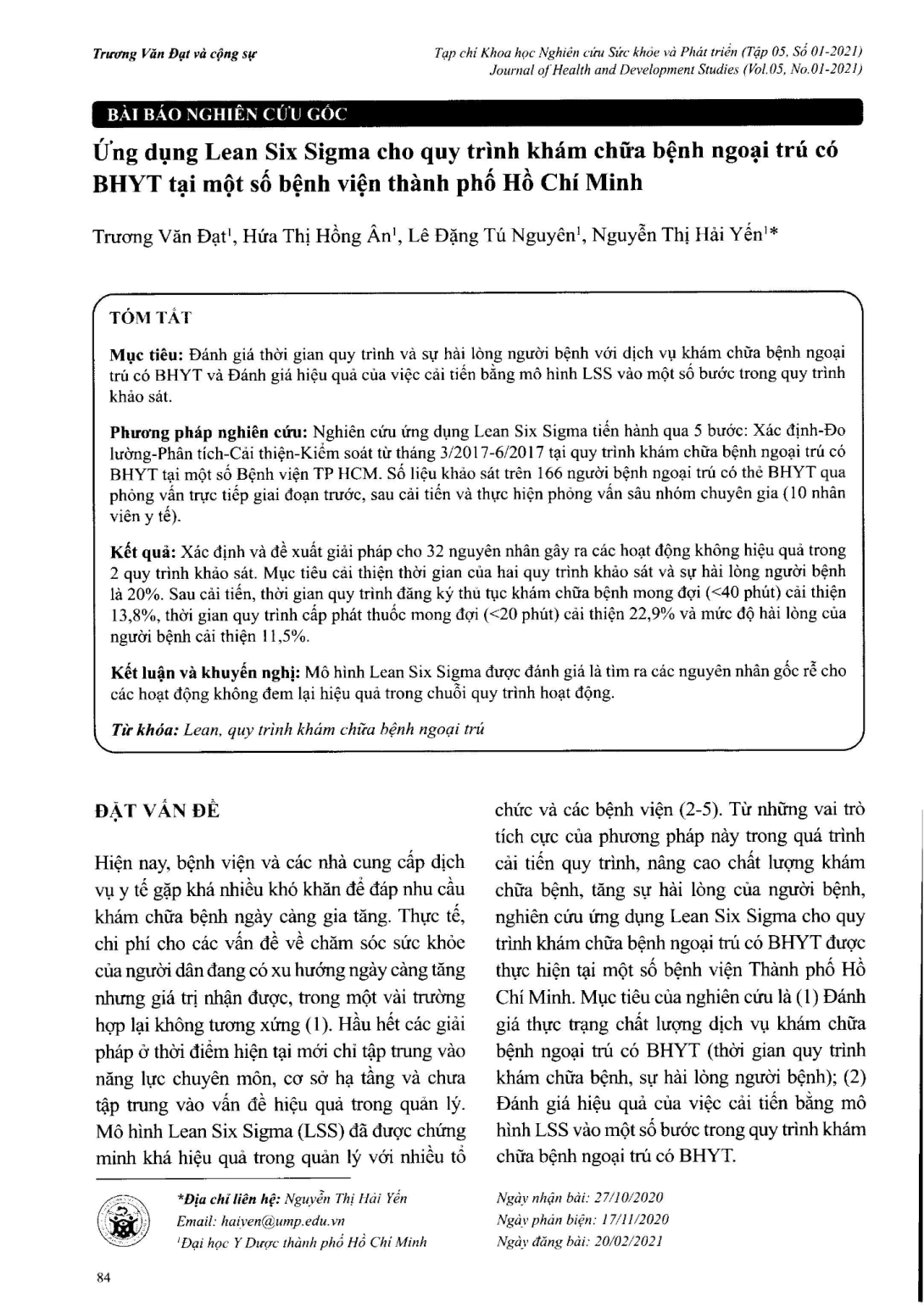
Đánh giá thời gian quy trình và sự hài lòng người bệnh với dịch vụ khám chữa bệnh ngoại trú có BHYT và Đánh giá hiệu quả của việc cải tiến bằng mô hình LSS vào một số bước trong quy trình khảo sát. Xác định và đề xuất giải pháp cho 32 nguyên nhân gây ra các hoạt động không hiệu quả trong 2 quy trình khảo sát. Mục tiêu cải thiện thời gian của hai quy trinh khảo sát và sự hài lòng người bệnh là 20%. Sau cài tiến, thời gian quy trình đăng ký thủ tục khám chữa bệnh mong đợi (<40 phút) cải thiện 13,8%, thời gian quy trình cấp phát thuốc mong đợi (<20 phút) cải thiện 22,9% và mức độ hài lòng của người bệnh cải thiện 11,5%.
Evaluate the current state of the quality of insured outpatient services (clinical time, patient satisfaction) and evaluate the effectiveness of the LSS improvement in some steps in the process. Methods Lean Six Sigma applied research is conducted through five steps Define-Measure-Analyze-Improve-Control from March 2017 to June 2017 in the outpatient care with health insurance in some Ho Chi Minh city hospitals. A survey on 166 outpatients with health insurance was conducted by direct interviews of pre- and post-admission and in consultation with 10 health staff members. Result 32 causes of ineffective activities were identified in two screening procedures. Then corrective measures were suggested. The goal of improving survey process timing and patient satisfaction is 20%. After improvements in the Lean Six Sigma model, positive results on the timing of the two procedures were obtained, including the expected length of the registration process (<40 minutes) was improved by 13.8%, the expected length of dosage regimen (<20 minutes) was improved by 22.9%, and the satisfaction level of patients was improved by 11.5%. Conclusion The Lean Six Sigma model is valued for identifying root causes for non-performance activities in the two above-mentioned screening procedures. It is recommended to apply this model to other procedures and other departments in the hospital, to propose remedies or eliminations from the process based on identified causes.
- Đăng nhập để gửi ý kiến
